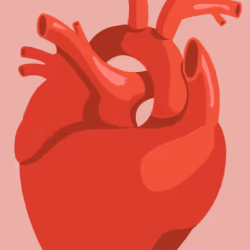Salt, a mineral made primarily of sodium chloride (NaCl), plays an essential role in human health. From regulating fluid balance to supporting nerve signaling, salt is critical for various biological processes. However, both excessive and insufficient salt consumption can lead to severe health consequences, highlighting the need to strike a balance.
Salt is essential for life, but its consumption must be carefully moderated to prevent health risks. Striking a balance between too little and too much salt can improve cardiovascular health, reduce disease risks, and enhance overall well-being.
Composition and Function of Salt
Salt is composed of two ions: sodium (Na⁺) and chloride (Cl⁻). Sodium is vital for muscle contractions, nerve function, and fluid balance, while chloride contributes to digestive processes and maintaining acid-base equilibrium. Together, they perform critical tasks, making salt an indispensable part of human nutrition.
Recommended Salt Intake
The World Health Organization (WHO) advises adults to limit salt consumption to no more than 5 grams (about a teaspoon) per day, equivalent to 2 grams of sodium. For children aged 2 to 15, recommendations are proportionally lower, based on energy requirements. These guidelines aim to reduce risks of hypertension and cardiovascular diseases.
Sources of Dietary Salt
Most dietary salt comes from processed foods, including snacks, canned goods, and fast food. Natural sources, like seafood and vegetables, contribute minimally. Understanding food labels and opting for fresh, unprocessed ingredients are effective strategies for managing sodium intake.
Salt and Fluid Balance
Salt’s primary biological role is in maintaining fluid balance. Sodium regulates water levels in cells and tissues, ensuring proper blood pressure and hydration. Imbalances, however, can lead to conditions like dehydration (excess sodium) or water retention (low sodium).
Acute Effects of Salt Consumption
Hypernatremia occurs when blood sodium levels exceed 145 mEq/L, causing thirst, confusion, and in severe cases, seizures or coma. On the other hand, hyponatremia, characterized by sodium levels below 135 mEq/L, can result in lethargy, altered personality, and potentially fatal swelling of brain cells.
Long-Term Effects of Excess Salt
Excessive salt intake is a major contributor to hypertension, increasing risks for heart disease, stroke, and kidney damage. Over time, high sodium levels can lead to left ventricular hypertrophy, where the heart’s walls thicken, compounding cardiovascular risks.
Salt and Cardiovascular Health
Reducing salt intake has been shown to lower blood pressure, even among individuals with normal levels. Studies indicate improved endothelial function and increased nitric oxide production in people following sodium-restricted diets. These changes enhance vascular health, offering long-term benefits.
Salt and Mortality Risks
Interestingly, research suggests a U-shaped relationship between salt intake and mortality. Extremely low or high sodium consumption correlates with increased risks of cardiovascular disease and premature death, emphasizing the importance of moderation.
Debates on Sodium Levels
Experts disagree on the ideal sodium intake, with some studies challenging the WHO’s lower limits. While high salt levels undeniably raise blood pressure, excessively restrictive diets may pose their own risks, particularly in vulnerable populations.
Special Considerations for At-Risk Populations
Older adults and individuals with hypertension, diabetes, or chronic kidney disease are advised to consume less than 2,300 mg of sodium daily. However, these recommendations should be personalized based on individual health needs and activity levels.
The Role of Potassium
Potassium is sodium’s natural counterpart, helping to counterbalance its effects on blood pressure. The WHO recommends adults consume at least 3.5 grams of potassium daily from sources like bananas, beans, and leafy greens.
Public Health Efforts
Global campaigns, such as the WHO’s “Salt Reduction” initiative, aim to reduce sodium intake through public education and reformulation of processed foods. Such efforts have shown promise in curbing salt-related health issues.
Tips for Reducing Salt Intake
- Use herbs and spices as salt substitutes.
- Cook meals from scratch to control sodium levels.
- Limit consumption of processed and restaurant foods.
- Check food labels for hidden sodium sources.

1. How much salt is safe to consume daily?
The WHO recommends no more than 5 grams of salt (2 grams of sodium) per day for adults.
2. Can you consume too little salt?
Yes, insufficient sodium can lead to hyponatremia, causing confusion, lethargy, and severe complications in extreme cases.
3. What are hidden sources of sodium?
Processed foods, bread, canned soups, and sauces often contain high levels of hidden sodium.
4. Are low-sodium diets safe for everyone?
While generally beneficial, extremely low-sodium diets may increase cardiovascular risks in some individuals.
5. How does potassium help counteract sodium?
Potassium balances sodium’s effects by promoting excretion and supporting blood pressure regulation.
6. What’s the difference between table salt and sea salt?
Nutritionally similar, sea salt contains trace minerals but has the same sodium content as table salt.












